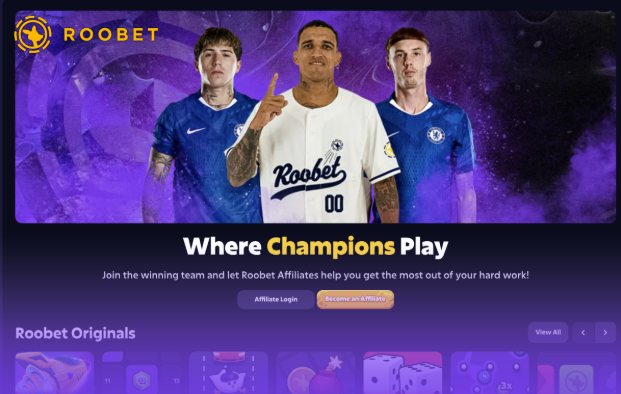Google’s Core Web Vitals are three core metrics initiated by Google to guide how to deliver an optimal user experience to your viewers.
Google’s Core Web Vitals or CWV are actually a pretty new concept and were only implemented in 2020. However, given the massive bump in digital adoption the pandemic has brought us, it isn’t surprising to see how valuable core web vitals are in today’s age.
What are Core Web Vitals?
If you haven’t encountered Core Web Vitals before, it might be confusing to look at all the different terms and try to understand them. But in reality, CWVs are easy enough to understand with the right mindset.
Say you’re expecting a package from Amazon. You bought a new set of musical Legos you’re incredibly excited to open. When the package arrives at your doorstep, you immediately begin tearing into it, and a few seconds later, you finally see the item you’ve been waiting for!
Those seconds between receiving the package and seeing what you bought is a good way to think about one of the core web vitals: Largest Contentful Paint.
LCP scores are based on how fast websites show the largest object on a webpage—which would typically be a hero photo, graphic, or video. The faster the item loads, the happier customers will be, and the higher your site’s LCP score will become.
Now, after you’ve opened your package, you want to see if it actually makes a sound like the ads say it does. When you click the button to power it up, you are immediately greeted with a welcome ringtone. As a buyer, you’re happy that the product not only works but that it works fast.
This core web vital is what we call the First Input Delay (FID). FID measures how fast your website responds to interaction such as clicking buttons or filling up forms. The faster your site responds to any action, the better your FID score will be.
Now that you’ve seen the blocks and you’ve tested if they worked, it’s time to stack them. You try stacking your Lego blocks in different ways, and much to your surprise, the shapes hold up fairly well regardless of how you arranged them.
This analogy is closely related to a core web vital called Cumulative Layout Shift or CLS. CLS measures how stable a website is even though it’s loading. This vital is important because you don’t want users to accidentally click on the wrong button. After all, the elements on the screen moved during the loading process.
If you’ve ever experienced misclicking a button and getting redirected to a whole new page just because you clicked a button too fast while a screen was loading—then you definitely know the struggle of page instability. The better your page holds up during loading, the better your site’s CLS score will be.
So, to summarize:
- LCP or Largest Contentful Paint measures how fast the largest content of your page appears once loading commences.
- FID or First Input Delay is a metric of how responsive the interactive elements are on your website. The faster an element responds, the higher your FID score.
- CLS or Cumulative Layout Shift is a measure of how stable your website is while it's loading. So the more stable your site is, the better your CLS score.
Core Web Vitals Benchmarks
Now that you understand the value of Google’s Core Web Vitals and how they work, let’s explore how Google actually measures these metrics.
One thing to note is that Core Web Vitals are measured based on the 75th percentile of users over the last 28 days in question. This means that if 75% of your users are experiencing a loading time of fewer than 2.5 seconds over the last 28 days, your page would fall into the Good category for LCP.
LCP
For LCP, the ideal loading time is 2.5 seconds to score a Good. If your page’s loading time goes beyond that but is still less than 4 seconds, that page will go under the Needs Improvement category.
However, if your page takes more than 4 seconds to load, it will be classified as having a poor LCP.
FID
The ideal FID is 100 milliseconds or less. If a user clicks on a button and your page responds in less than a hundred milliseconds, you’re in the safe zone. If it’s more than 100 but less than 300, your page needs some improvement.
However, if your page takes more than 300 milliseconds to respond, it will fall under the poor category for FID.
CLS
The ideal CLS for a web page is 0.1. Anything beyond that up to a 2.5 is a page that needs improvement, but if your page scores a CLS score of more than 2.5, then it’s a clear sign that that page needs some significant rework for stability.
Why are Core Web Vitals Important?
The value of Core Web Vitals is so much more than the numbers alone. Sure, having excellent CWV scores is an excellent way to rank your websites and give your pages more visibility in the search rankings.
However, an equally important facet of CWVs is about customer experience. If you have good CWVs, your customers are more likely to have a better user experience of your website.
- They will be less frustrated by loading times;
- They won’t be accidentally redirected to pages while browsing;
- They will be more easily converted thanks to the stellar UX your site provides.
As much as Google’s Core Web Vitals are technical aspects of web development, their importance in the business side of things is truly unquestionable.
Tips for Improving CWVs
Don’t Get Overwhelmed
Before we jump into any of these other tips, one thing you have to remember while developing or improving your own website for CWVs is that Google analyzes websites one page at a time.
One of the biggest mistakes you can make is becoming paralyzed by the thought of optimizing your entire website that you forget to do it one page at a time.
To combat that, try to focus on your high-traffic and highest-converting pages for the best results. This could be your:
- Landing page;
- Product Page;
- Informative Articles.
Optimize Your Images
Images and other media are some of the most common culprits for a slow website. If your photos aren’t optimized for size, then you’ll find your website won’t score as high on Google’s Core Web Vitals.
To improve image loading speed, you can try compressing or resizing the images on your website—just make sure you aren’t sacrificing quality for speed!
Use Lazy Loading
Lazy loading is a great way to optimize element loading time by only loading images or non-critical elements as soon as they become visible to the viewer. This way, there is less strain on your page to load everything at once, potentially causing issues with inefficient load times.
Utilize Browser Cache
Another way you can improve your Core Web Vitals is through the use of browser caching.
When you’re developing your website, you can leverage browser caching to store and reuse website resources, which would help reduce the amount of time it will take to fetch them from servers.
As a result, your website will respond faster to viewer interactions.
Test Across Different Devices
One thing you shouldn’t neglect to consider is testing across different devices. If you’re building a website mainly for the web, it should look just as good and be just as interactive on mobile.
In recent years, mobile-first design has taken a lead in how websites are being developed, but you should still consider other screen sizes and devices. After all, you never know what device your viewer could be using.
You should test for:
- Mobile devices (make sure to test for both Apple and Android devices);
- Average computer screens;
- Large computer screens;
- Tablets.
There could be other relevant breakpoints depending on your industry, but generally, those four are the ones you want to look into.
Additionally, when designing and testing your website across different devices, it's crucial to consider the specific needs and preferences of the target audience. For instance, if the website caters to the Indian market and focuses on topics like cryptocurrency, such as the best place to buy Bitcoin in India, it becomes even more important to ensure a seamless user experience across various devices.
Whether viewers are accessing the site on mobile, tablets, or different computer screens, they should have easy access to the information they need, including the latest insights and options for purchasing Bitcoin in India. Remember, catering to the diverse device landscape and optimizing for user engagement can greatly enhance your website's success in serving the specific needs of the audience.
Regularly Monitor your Site
You can’t improve what you don’t measure. Regularly monitoring your site’s performance is a good way to stay on top of your website and improve Core Web Vitals where necessary.
With proper monitoring tools like Chrome’s Lighthouse. Google Page Speed Insights, and Chrome Dev Tools, you can easily check which areas of your site need improvement and which areas you are doing perfectly well on.
Reserve Spaces
When developing your website, you should try to avoid inserting dynamic elements that could cause sudden layout shifts. As discussed previously, your page’s elements need to be stable while loading so that nothing on the page will move around unnecessarily.
A good way to achieve this is by reserving spaces or adding placeholders for dynamic content like ads. If you don’t set aside space, you run the risk of dynamic elements moving aside elements on the page and disrupting page stability.
Set and Define Performance Budgets
Finally, set performance budgets for your web pages. As you monitor your site for Core Web Vitals, set a specific goal you want to have for that particular page and make sure it doesn’t go below that threshold.
If it does, then that’s a sign that you want to go in quickly and address the issue.
Using predetermined performance standards helps you:
- Take actionable steps toward improvement;
- Easily identify which pages need work;
- Determine which areas you need to work on.
Conclusion
Sure, Google’s Core Web Vitals may still be new, but they’re not going anywhere anytime soon! These unifying metrics will be a part of web development for the years to come, and it will only get better from here on out. You can always contact digital product studio to develop a website for your business.
As early as now, make sure you’re implementing Core Web Vitals into your web pages and rock those search rankings and customer conversions.
Author bio:
Roy Emmerson is a passionate technology enthusiast with a deep interest in software development. In addition to being a skilled programmer at a custom software company, he is also a loving father of twins who inspire him to stay up-to-date with the latest technological advancements


.jpg)




